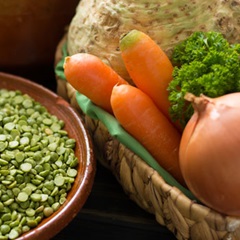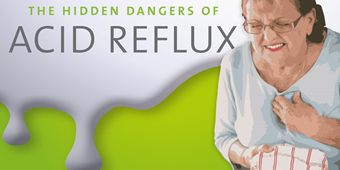Your Digestive System, From Top To Bottom

Answer a few questions and we'll provide you with a list of primary care providers that best fit your needs.
Your digestive system takes what you eat and drink on an amazing journey through nearly 30 feet of twisting, winding, churning tubes and organs. Astonishing in its ability to separate what your body does and does not need to survive and grow, the system breaks down food into essential molecular nutrients.
A healthy digestive system is key to life, but how much do you know about it?
Following is an overview of the nine major components of the digestive system, how they function, and how they keep you in good health.
The Mouth
Digestion starts here. When you chew food, saliva moistens it and breaks it down a bit, and your tongue pushes the food into your throat. Meanwhile, a small flap of tissue, called the epiglottis, blocks your trachea (the breathing tube that leads to the lungs) to make sure the food moves down the right tube.
The Esophagus
The esophagus is a tube that leads from your throat to your stomach. Once you swallow and the food moves out of your mouth, your brain signals the muscles in your esophagus to begin constricting and relaxing, pushing the food down to the stomach. This muscle movement is known as peristalsis.
At the end of the esophagus is the lower esophageal sphincter, a ring-like muscle that closes to keep the food that enters your stomach from backing up into your esophagus.
The Stomach
Stomach muscles mix up your food and drinks with digestive juices. This process breaks down the food into a partially digested solution called chyme.
The Small Intestine
 The stomach empties chyme into the small intestine. Digestive juices (from the liver, pancreas, gallbladder, and the small intestine) further break down the chyme, while intestinal muscles push it downward. The walls of the small intestine absorb water and vital nutrients from the mixture. The remaining waste empties into the large intestine (colon).
The stomach empties chyme into the small intestine. Digestive juices (from the liver, pancreas, gallbladder, and the small intestine) further break down the chyme, while intestinal muscles push it downward. The walls of the small intestine absorb water and vital nutrients from the mixture. The remaining waste empties into the large intestine (colon).
The Liver, Pancreas, And Gallbladder
Food does not pass through these organs, but they all play a vital role in digestion.
The pancreas makes a digestive juice that contains enzymes, which break down carbohydrates, fats, and proteins. The pancreas delivers the juice to the small intestine through small ducts, or tubes.
The liver makes bile, a juice that helps digest fats and some vitamins. Bile moves through ducts to your gallbladder for storage, or to the small intestine for use.
The gallbladder stores bile between meals. When you eat, bile moves from your gallbladder through ducts and into your small intestine.
The Large Intestine (Colon)
Undigested food, fluid, and other waste products move from the small intestine into the large intestine. The large intestine absorbs fluid and electrolytes from the waste. What’s left becomes stool. Intestinal muscles move the stool to your rectum.
The Rectum
Stool is stored here until it’s pushed out through your anus (this is a bowel movement).
Other Players
Hormones are produced and released by cells in the lining of the stomach and small intestine. They stimulate digestive juices and cause organ movement. Other hormones work on the brain to regulate appetite. Bacteria in your system (also called gut flora or microbiome) also help with digestion.
Two types of nerves – extrinsic and intrinsic – help control the action of the digestive system. Among other actions, they regulate muscle movement, blood flow in the organs, and release of digestive juices.
Is your digestive system working as designed? At your next visit with your primary care physician, ask what you need to do to maintain good digestive health.
Answer a few questions and we'll provide you with a list of primary care providers that best fit your needs.
Source: National Institute of Diabetes and Digestive and Kidney Diseases; International Foundation for Gastrointestinal Disorders; Hopkinsmedicine.org




